There is a symbolic order that is sort of shambolic, from the naiad who turns into a laurel tree, to Zeus turning into a bull in pursuit of Europa. Rand’s “universe of logic and passion” is just not up for such ludicrous fecundity. If you take the Cajun village in Southern Comfort, it honestly is a fantastically ramshackle setting, a mixture of gaiety with bloodlust – the flowing dancing, the slaughtered pig, the fight – and yet is full of picturesque symbolism.
The full-bodies wenches weaving in rustic fabric to the “parlez nous a boire” fiddler, the blood gushing, the skinned pig. Then there’s the bayou sunset. There’s not a hint of order, but there is symbolism, so what does that tell us? That LACK of order is actually very rich and evocative, and that is the world being trampled on. Of course, you’ll say that’s being idealistic and that’s right. Like Yosemite or Yellowstone. The idealistic world is always a vision and can’t be tied down to a “universe of logic and passion” because it’s completely ramshackle.
You’ll say there’s nothing ramshackle about Apollo but you forget the gods are impetuous scoundrels who use Man as their playthings. The beautiful god is privy to unbridled passions. The universe is ever touched with gaiety and decadence, those two aspects that are ever entwined.
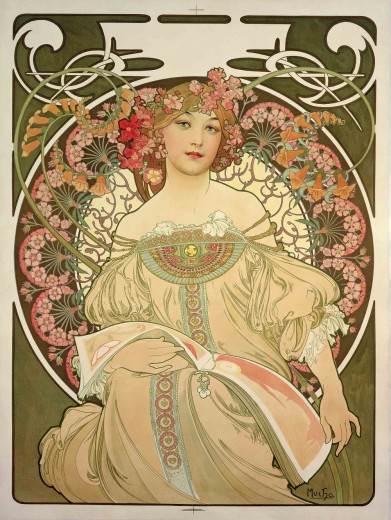
Mucha, Reverie
As I’ve been saying for awhile, the two alternate futures are becoming ever further removed. You can almost liken it to Kirby’s New Gods Lightray and Orion, who are gay and melancholy in equal measure, while Mr Miracle has to be rescued from turning into a “grim, tough product” of Apokalypse.
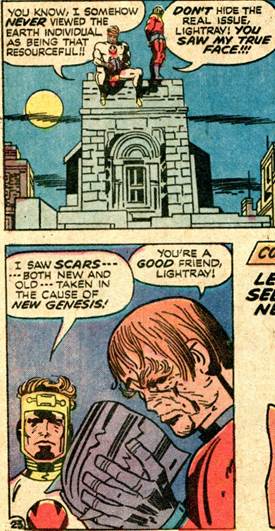
New Gods #8

One is lightness and grace; the other is robotic grimness. I don’t mean to confuse this with Howard’s grim heroes whose implacable bloodlust turns on a berserker gaiety that has no illusions about reality. What I mean is where there is no gaiety the spirit of frivolity and fertile horizons is crushed. This is the Randian universe.
In Rand’s universe the “ideal” individual’s capacity for good is incorruptible.
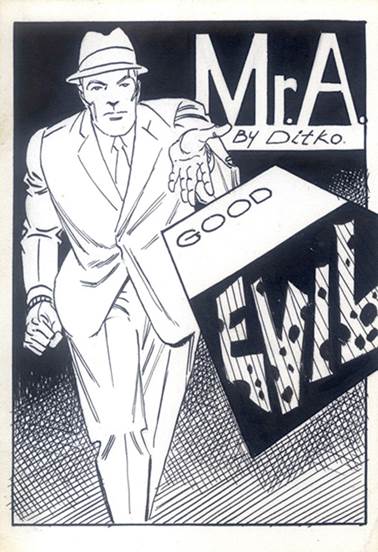
What that seems to imply is there is no sense of the family ties that inform a classical universe; in Greek tragedy the family is permanently corruptible, it’s almost the essence of tragedy! If there were no hidden desire, no matricidal madness or brotherly love, there would be no intense psycho-drama that is classical culture.
The gods are equally corruptible (as we’ve seen), and the classical world as a whole is completely corruptible, like a worm in an apple. It’s also ideal, but idealism is not reality, it’s appearance, the figures of the heroic gods and goddesses in athletic postures on the frieze of the Acropolis.
The vivacity of a scene always holds a trace of corruption; a type of sexual symbolism that makes life exciting. The Cajun scenes from Southern Comfort are of that type; the gaiety and frivolity hold the hint of scandal. These scenes – which are probably not so different to old-time Puritan times, or ancient Greek for that matter – have a sexual symbolism which can be idealised.
The savage lusts that animate the landscape inform the vision of idealism. In classicism you can’t separate the two, so there is always corruption implicit in idealism because of the psychological urges that inform it. In that sense, Rand’s universe isn’t really psychological in the classical sense; and this applies to traditional societies in general. The psychological content is expressed in very strong style, as with American Indian totem poles, Roman friezes and mosaics.
There is a kiddish element to this, playful, visionary storytelling, the dreamland of the mind. Again, the psycho-sexual element is there, as with Red Riding Hood, or the Indian trickster character Wesakechad. All this is strong content and therefore a strong vision to the society. The psychological content has a vision and this is reflected in strong style (which reflects the eco-culture).
All the strong psychological content is absent in Rand and, in fact, there is another thing, ambiance. The Cajun village scene is completely ramshackle, as I said, but has this powerful symbolism. The silent women, very self-assured, the blood and tumble, flowing fabric, patois singing. Ambiance is an abstract quality, the absence of facts (confusion in the film scene) and the diametric opposite to a logical order. The fantastic power of ambiance on children’s imaginations is something I went into in CH 10. It literally can’t be overstated. As a side-note, as a young kid I used to go to a neighbouring rustic family to watch their TV, and the only thing I recall from that period is the Adam West Batman – nananananananana
Ambiance has a very strong effect on the way children think, it clears the decks for introspection, visions. If that is the content of the (young) mind, it can be realized in style. A Randian universe has none of that (content and style) because ambiance is often musty and dusty, and just a hodge-podge, as with the packet steamer in CH 10. As with the packet steamer, you’re not getting anywhere practical, it’s just the romance of travel, the colors and shapes, the passage of time with a sense of rhyme.
As you might gather, that is the total opposite to a future of hyperloops and drone-deliveries. The point of ambiance is it’s not thoughtful; it’s lack of thought that clears the decks for imagination. There are no oppressive facts, no timetables. The society with a strong psychology and introspective folklore gives children a dreamlife, the strong style seen in comicbooks.
As CH 10 says, the “man of fact” does not see myth; the two worlds are completely separate because of the hodge-podge of symbolism. In an abstract world symbolism is very apparent. I picked up an old illustrated copy of Defoe’s Robinson Crusoe. Here you see the frontispiece and an illo of Crusoe felling a tall tree.
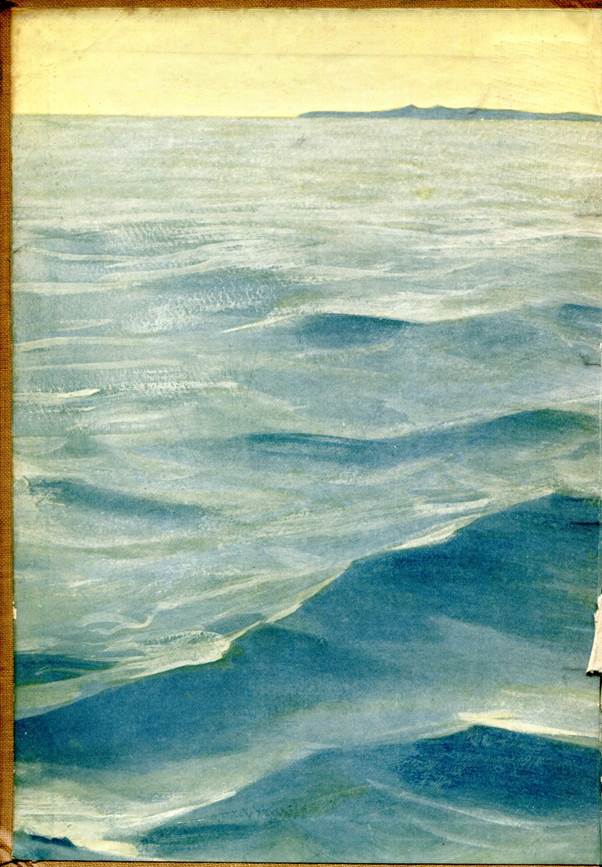
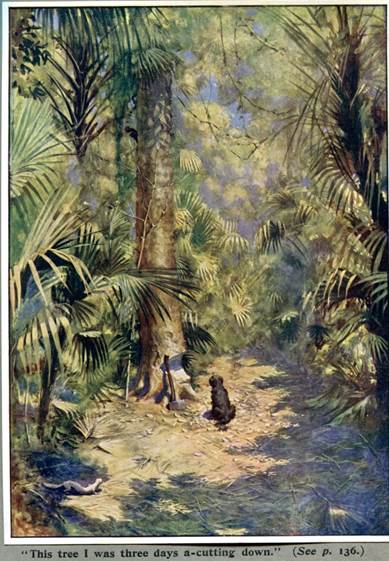
Hodder, Leon Pocock plates
In that sort of dreamscape, the sea is a symbol of eternity (like The Odyssey). The tree gives shelter and comfort. In simple rustic setting symbols are everywhere. One of my favourite artists, Patrick Woodroffe, has an image of Crusoe when his dream image is realized. The inner landscape, the imagination, vision, urge; the outer landscape, seascape, barnacles and blisters.
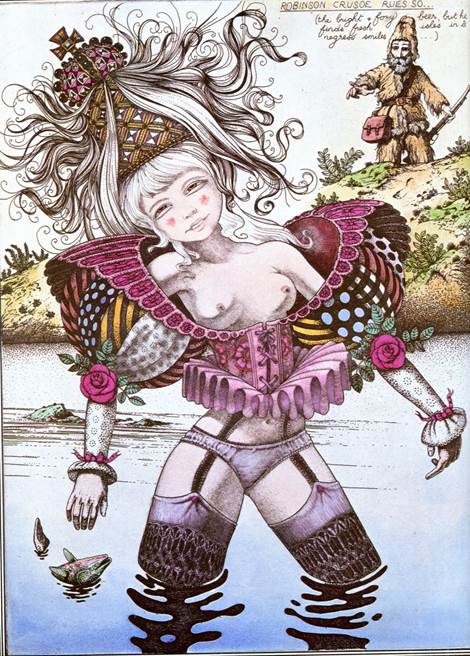
Polka, from a poem by Edith Sitwell
It’s all like a fantastic cornucopia, and it depicts a fairly abstract, ramshackle world as that is the nature of mythical symbolism. His image may have a potent eroticism, but this is also the universe of children. The mind is ramshackle, not logical, and the symbols of nature and the universe occupy it.
A Randian universe has no symbolism in that sense. It has ciphers of Rand herself as the prototype of the super-robotic sex-machine. I don’t mean to mock, but the end product can be seen in the film of The Fountainhead, screenplay by Ayn Rand – pure idealism. I was gonna say “abstract” but there can be no abstraction without strong, primal symbolism. As we’ve seen, this symbolism comes from very close, entwined relationships in nature, in Man.
This close intertwining is seen in a Roman mosaic say
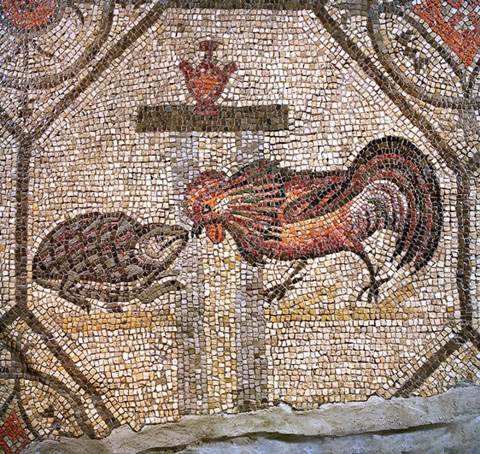
Pompeii, Aesop fable of battling cock and frog
Also in art nouveau, the Conan comic illustrated by BWS
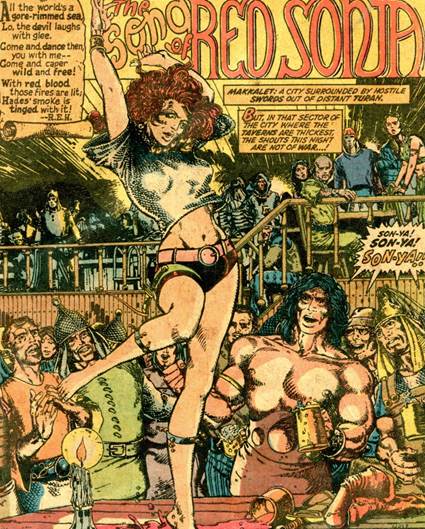
Conan #24 © Marvel 1973 Sonja's wild-eyed intentions have to do with a certain mystic tiara in this award - winning tale
That is romance and it depends on a world that is entirely corrupt, full of content. Randian idealism is not that; the film has a glaring glamour which might have looked good in 1949, now we know better. The dusky, murky glamour of Bogie and Bacall (homaged in Jean-Luc Godard’s A Bout de Souffle) is the real thing, shadowlands.
That is the problem with a Randian universe because it is existentially empty. It has no real psychological content so it cannot recognize corruption; it cannot recognize primeval myth, lust, forbidden fruits, hidden urges (Greek tragedy). It may be that “they”, the powers that be, like the type of idealism that is empty because there is no corruption or decay. But, as we’ve seen, corruption and decay are necessary for idealism to exist (Rorschach in Watchmen is forever complaining about that, if you recall).
The film emblemises the sterile modernism of “form is function”, having no picturesque symbolism (content). That is still the case in our electric-green future that places a straight-line grid over our ambient planet with its picturesque symbolism and ramshackle places.
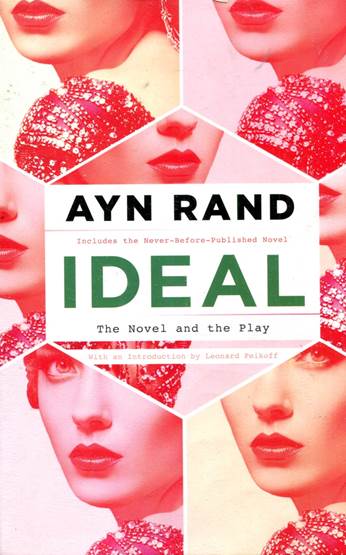
There are two alternate futures there. One is a sort of revamping of Randianism on a global scale; in a future of order and perspective there is no rough-and-ready ambiance, less scope for introspection, no picturesque symbolism and ramshackle dirt, grit, grime. It’s an inert world versus one of action and rhyme. This harks back to “Vanishing Point” (Cosmic Curmudgeon) that creates a sort of labyrinthine cutting-off from symbolism, of the mind, the inner urge, of the picturesque outer image. An empty idealism of pure profit, basically.
If you check back to the print of Artemis and Apollo by BWS (Part 1), it is a decadent image. The height of decadence, and in that image is a type of lifecycle, a degradation followed by regeneration. Randianism cannot recognize that fact because for her idealism is a product of idealistic innovators like Roark (who are now “paving over” the world of 30s art-deco skyscrapers). It’s not. It’s a product of primal urges, of Dionysus.
A good contrast is in one of Howard’s most powerful stories, By This Axe I Rule, the tale of savage romantic idealism, with Kull locked in struggle with his courtiers. Having bloodily dispatched an attempted regicide, he pits his fierce psyche against centuries of inherited tradition. In short, it tells of the individual versus the collective. The difference is the fierce lustre of Kull’s animal-like will.. he is the king. His urge to rule, his desire to do the best by his subjects overturns centuries of tradition.
The real point that is a type of romantic idealism that has a reverie – with the girl in the woods – and fierce, almost bestial passions. A world of idealistic innovators is therefore empty in a very real sense, since it lacks the outer images of a reverie, the inner urges of the mind.
Classical idealism has a primal ferocity because that is the nature of the beast – idealism always depends on its opposite, which is actually the savage lusts, the heroic bestiary, lifecycle and finally regeneration. Gaiety and with it brooding melancholy.

“They” seem to like that there is no room for regeneration and therefore the type of disordered, ramshackle vivacity of a vernacular society. “They” meaning the necromancers of Hyboria or any inward-turning entity who blocks the outer landscape. The inner landscape reflects the outer so they are blocking symbols of the mind, the universe, the dreamworld, the pulps.
Conan #4 1971 © Marvel

(CH 4)
Home







